
Mehmed II, commonly known as Mehmed the Conqueror, was twice the sultan of the Ottoman Empire from August 1444 to September 1446 and then later from February 1451 to May 1481.
Year 1451 (MCDLI) was a common year starting on Friday of the Julian calendar.

Moldavia is a historical region and former principality in Central and Eastern Europe, corresponding to the territory between the Eastern Carpathians and the Dniester River. An initially independent and later autonomous state, it existed from the 14th century to 1859, when it united with Wallachia as the basis of the modern Romanian state; at various times, Moldavia included the regions of Bessarabia, all of Bukovina and Hertsa. The region of Pokuttya was also part of it for a period of time.
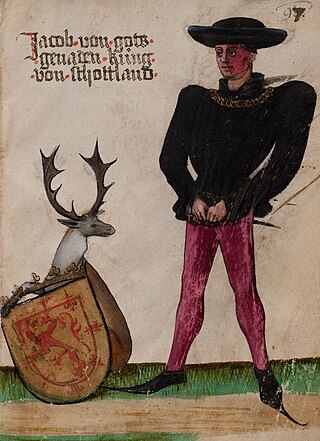
James II was King of Scots from 1437 until his death in 1460. The eldest surviving son of James I of Scotland, he succeeded to the Scottish throne at the age of six, following the assassination of his father. The first Scottish monarch not to be crowned at Scone, James II's coronation took place at Holyrood Abbey in March 1437. After a reign characterised by struggles to maintain control of his kingdom, he was killed by an exploding cannon at Roxburgh Castle in 1460.
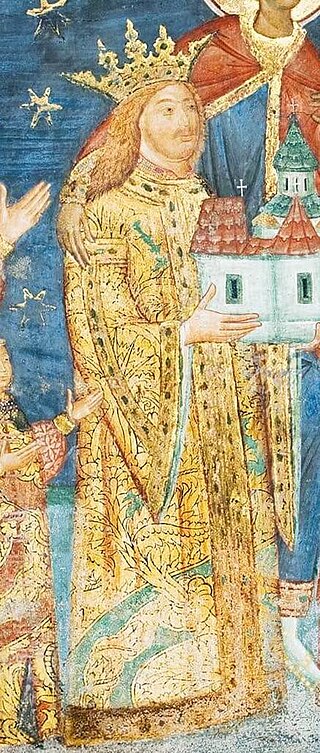
Stephen III, commonly known as Stephen the Great ; died 2 July 1504), was Voivode of Moldavia from 1457 to 1504. He was the son of and co-ruler with Bogdan II, who was murdered in 1451 in a conspiracy organized by his brother and Stephen's uncle Peter III Aaron, who took the throne. Stephen fled to Hungary, and later to Wallachia; with the support of Vlad III Țepeș, Voivode of Wallachia, he returned to Moldavia, forcing Aaron to seek refuge in Poland in the summer of 1457. Teoctist I, Metropolitan of Moldavia, anointed Stephen prince. He attacked Poland and prevented Casimir IV Jagiellon, King of Poland, from supporting Peter Aaron, but eventually acknowledged Casimir's suzerainty in 1459.
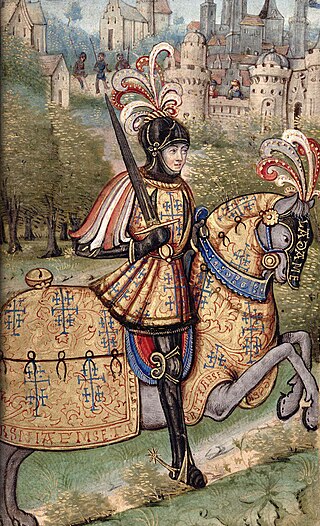
René II was Count of Vaudémont from 1470, Duke of Lorraine from 1473, and Duke of Bar from 1483 to 1508. He claimed the crown of the Kingdom of Naples and the County of Provence as the Duke of Calabria 1480–1493 and as King of Naples and Jerusalem 1493–1508. He succeeded his uncle John of Vaudémont as Count of Harcourt in 1473, exchanging it for the county of Aumale in 1495. He succeeded as Count of Guise in 1504.

Vlad III, commonly known as Vlad the Impaler or Vlad Dracula, was Voivode of Wallachia three times between 1448 and his death in 1476/77. He is often considered one of the most important rulers in Wallachian history and a national hero of Romania.

Alexander I, commonly known as Alexander the Good was Voivode of Moldavia between 1400 and 1432. He was the son of Roman I and succeeded Iuga to the throne. As ruler he initiated a series of reforms while consolidating the status of the Principality of Moldavia.
Bogdan or Bohdan is a Slavic masculine name that appears in all Slavic countries as well as Romania and Moldova. It is derived from the Slavic words Bog/Boh, meaning "god", and dan, meaning "given". The name appears to be an early calque from Greek Theodore or Hebrew Matthew with the same meaning. The name is also used as a surname in Hungary. Bogdana is the feminine version of the name.
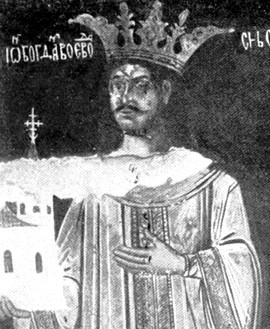
Bogdan III the One-Eyed or Bogdan III the Blind was Voivode of Moldavia from July 2, 1504, to 1517.
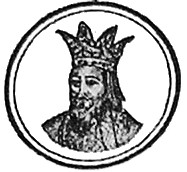
Peter III Aaron, bastard son of Alexandru cel Bun, was a Voivode (Prince) of Moldavia on three occasions: October 1451 to February 1452, August 1454 to February 1455, and May 1455 to April 1457. The first two were during a civil war with Alexăndrel.
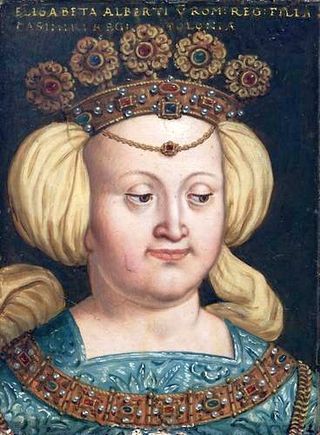
Elizabeth of Austria was Queen of Poland and Grand Duchess of Lithuania as the wife of King Casimir IV of Poland. Orphaned at an early age, she spent her childhood in the court of Holy Roman Emperor Frederick III. As one of the three surviving grandchildren of Emperor Sigismund, she had a strong claim to the kingdoms of Hungary and Bohemia. That made her an attractive bride for a Polish prince. The Polish nobility, seeking to increase Polish influence in Hungary and Bohemia, pursued marriage with Elizabeth since she was born and finally succeeded in 1454. Her marriage to Casimir was one of the most successful royal marriages in Poland. She gave birth to thirteen children, eleven of whom survived to adulthood. Four of her sons were crowned as kings.
Bogdan Musiał is a Polish-German historian. In 1985 he left Poland and became a political refugee in Germany, where he obtained German citizenship. In 2010 he returned to Poland and became a professor at the Cardinal Stefan Wyszyński University in Warsaw.

Bogdan Lalić is a Croatian chess grandmaster. He has the record of an unbeaten streak of 155 games.

Amadeus VIII, nicknamed the Peaceful, was Count of Savoy from 1391 to 1416 and Duke of Savoy from 1416 to 1440. He was a claimant to the papacy from 1439 to 1449 as Felix V in opposition to Popes Eugene IV and Nicholas V.
James Stewart, the Black Knight of Lorne was a Scottish nobleman.

The Order of Bohdan Khmelnitsky was a Soviet award named after Bohdan Khmelnytsky, Hetman (leader) of the Ukrainian Cossack Hetmanate The award was first established on October 10, 1943, by the Presidium of Supreme Soviet of the USSR during World War II. It was the only Red Army award to be written in the Ukrainian language.

Philippa of Guelders, was a Duchess consort of Lorraine. She served as regent of Lorraine in 1509 during the absence of her son. She was the great-grandmother to Mary, Queen of Scots.

Bogdan Bogdanović is a Serbian professional basketball player for the Atlanta Hawks of the National Basketball Association (NBA). He also represents the Serbian national team.

Margaret of Austria, a member of the House of Habsburg, was Electress consort of Saxony from 1431 until 1464 by her marriage with the Wettin elector Frederick II. She was a sister of Emperor Frederick III.
















